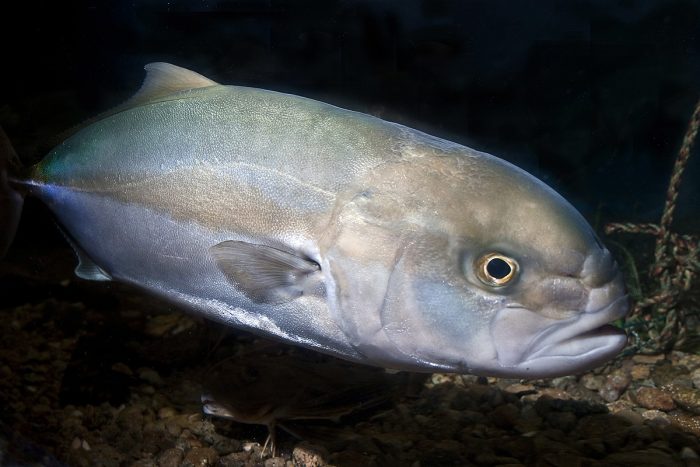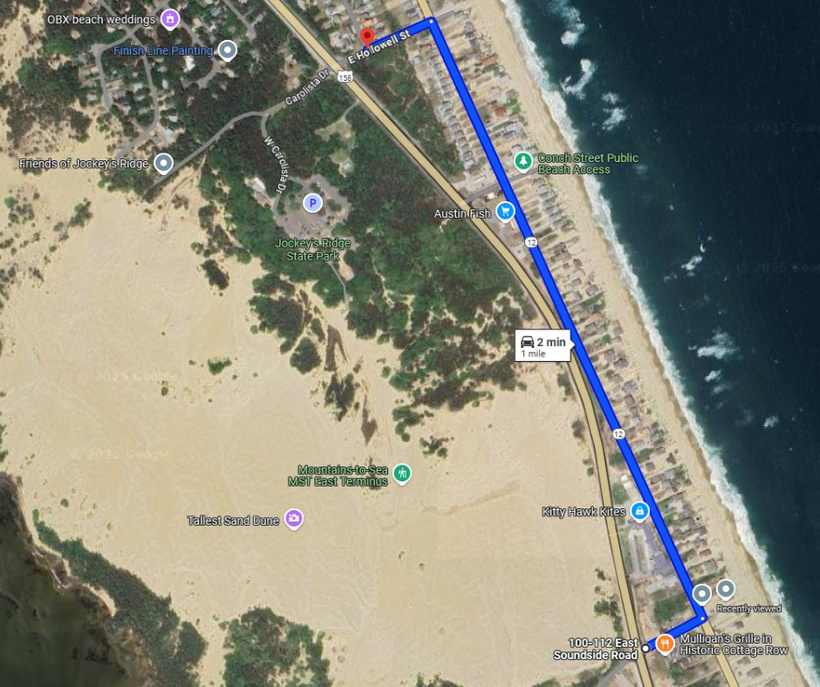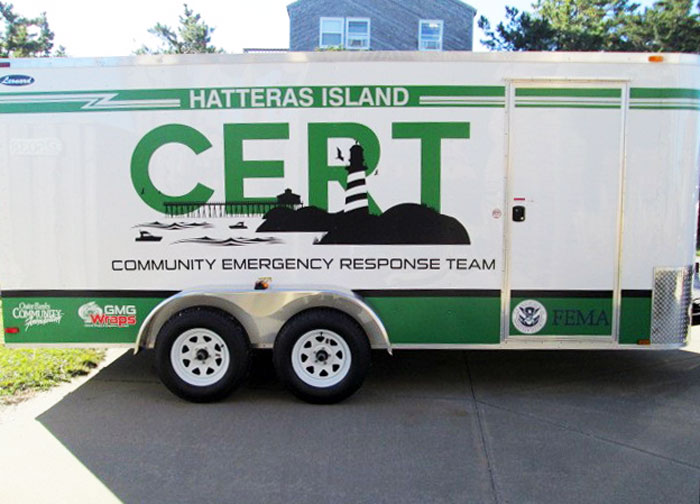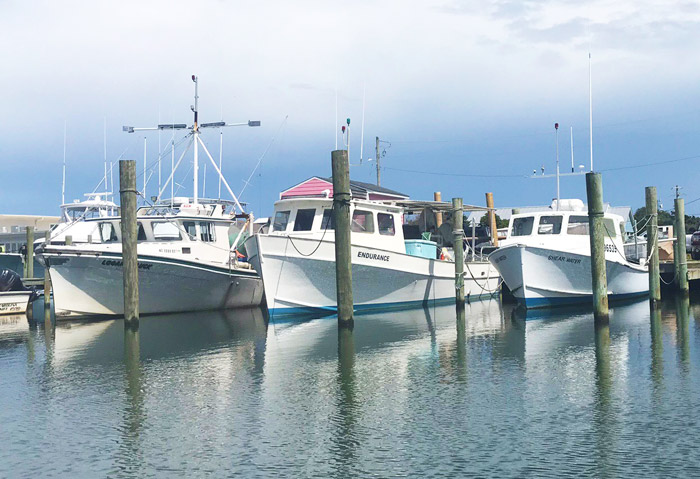Stubborn greater amberjack live up to ‘reef donkey’ name

Greater amberjack are often called “reef donkeys” by fishermen because of their strength and stubbornness. These powerful fighters can test any anglers’ tackle and ability to land them.
Greater amberjack are commonly caught while anglers are pursuing king mackerel. They have a deeply forked tail like that of tuna. Fishermen catch this species by drifting with live or cut baits, jigging and by trolling with spoons and other deep-running artificial lures. Chumming will draw in and keep schools of amberjack near the boat.
The greater amberjack is a large, fast-swimming fish with a wide range in the wild. They can grow up to 6 feet in length and weigh up to 200 pounds.
These fish are found from Nova Scotia, Canada, south to Brazil, into the Gulf of Mexico, then throughout Caribbean. North Carolina’s record greater amberjack was caught off Swansboro in 2008 by Michael Krantz.
Citations are awarded to North Carolina anglers for fish weighing 50 pounds or more, and there is also an award presented for the live release of any greater amberjack released that is 50 inches or larger.
“Greater amberjack have a dark amber strip on their head, extending from their snout to the first dorsal fin on their back, which becomes more distinct when the fish gets excited, or is busy feeding. Their coloration includes a brownish or bluish-grey back, a silvery-white belly, along with the signature amber horizontal strip along the middle, or lateral line of their body. Young amberjack have a yellow color and five or six dark vertical bars along their sides,” said McLean Seward, North Carolina Division of Marine Fisheries biologist.
“This species can be observed swimming in and around shipwrecks, near reefs, rocky outcropping, floating debris and sargassum blooms from open water and reef systems. Studies have shown that greater amberjack generally move in the spring from the Carolinas to southeast Florida, which could be related to spawning activity,” he said.
“Greater amberjack can grow to be up to 6 feet long and live to be approximately 17 years of age. While adults can weigh up to 200 pounds, they are usually caught up to 40 pounds. Females typically grow larger in size and live longer than males. This species become sexually mature by the time they reach about 3 to 5 years old, and usually spawn between March to July, peaking during the months of May and June on reefs and shipwrecks. A single female can release between 18-59 million eggs during each spawning season,” he said.
“Adults eat mostly crab, squid and other fishes found on reefs. Juveniles feed on plankton, including crustacean larvae and other small invertebrates. Predators that feed on amberjack include seabirds and larger fishes, such as yellowfin tuna, and some species of shark,” Seward said.
Amberjack are opportunistic predators that feed over reefs and wrecks in small groups or schools. They will eat practically anything they can fit in their mouths and are able to swallow.
This species is managed by the South Atlantic Fishery Management Council for North Carolina, South Carolina, Georgia and Florida, along with their federal partner, the National Oceanic and Atmospheric Administration’s National Marine Fisheries Service, also known as NOAA Fisheries. There are three stocks of greater amberjack: Gulf of Mexico, South Atlantic and Caribbean.
“The Gulf of Mexico stock is overfished, according to a 2017 stock assessment, but is not subject to overfishing based on 2019 catch data. The South Atlantic stock is not overfished and not subject to overfishing according to a 2020 stock assessment. The population status of the U.S. Caribbean Jacks Complex, which includes greater amberjack, is unknown. The complex has not been assessed, but according to 2018 catch data, the complex is not subject to overfishing,” said Steve Poland, executive assistant for councils with the North Carolina Division of Marine Fisheries and vice chair of the South Atlantic Fisheries Management Council.
“During a historically high period of landings during the 1980s and 1990s, greater amberjack became an important substitution for red drum, which had experienced a lower trend in commercial landings. In the Gulf of Mexico, fishing rates were too high, and the stock was declared overfished in 2001. The Gulf of Mexico stock has been in a rebuilding plan since 2003,” he said.
There is a recreational daily bag limit of one fish per person per day. In April, limits of one per person per day or one per person per trip, whichever is more restrictive, were put in place for for-hire and charter boats. The minimum size limit is 28-inches fork length.
Federal regulations governing the take of this species in waters between 3 and 200 nautical miles off the coast are mirrored by North Carolina in its state waters by proclamation. Open season for recreational anglers is March 1 through the end of February every year.
Recreational and commercial fishermen are required to use dehooking tools when fishing for snapper-grouper species. At least one dehooking device is required and must be used as needed to remove hooks embedded in South Atlantic snapper-grouper with minimum damage. The hook removal device must be constructed to allow the hook to be secured and the barb shielded without reengaging during the removal process. The dehooking end must be blunt, and all edges rounded. The device must be of a size appropriate to secure the range of hook sizes and styles used in the South Atlantic snapper-grouper fishery.
“A descending device is required to be on board and readily available for use on all vessels fishing for or possessing snapper-grouper species. A descending device is an instrument that you are to attach a minimum 16-ounce weight and a length of line that will release the fish at the depth from which the fish was caught or a minimum of 60 feet. The descending device attaches to the fish’s mouth or is a container that will hold the fish. These are required to be capable of releasing the fish automatically by the actions of the operator of the device, or by allowing the fish to escape on its own. Since minimizing surface time is very important for increased survival, descending devices are required to be on hand and ready for use,” Poland said.
The use of nonoffset, nonstainless steel circle hooks is required when fishing for greater amberjack and other snapper-grouper species with hook-and-line gear and natural baits.
During April of each year, harvest or possession of greater amberjack is limited to one per person per day or one per person per trip, whichever is more restrictive, with no sale allowed and regardless of whether the fish was harvested in state or federal waters. Since this species is managed under an annual catch limit, the fishery could close if the commercial annual catch limit is met or projected to be met.
“If an in-season closure were to be announced by NOAA Fisheries, all relevant information will be included on the (South Atlantic Fishery Management Council) website,” Poland said.
The commercial fishing trip limit for season 1, which runs from March 1-Aug. 3, is 1,200 pounds whole weight or gutted weight. Trip limits for season 2, which runs from Sept. 1 through the end of February, is 1,000 pounds whole weight or gutted weight. The minimum size limit is 36-inch fork length.
“There are two commercial fishing seasons for greater amberjack with 60% of the commercial annual catch limit allocated to season 1 and 40% to season 2, and the transfer of any remaining quota from Season 1 to Season 2. After the commercial annual catch limit is met, all purchase and sale are prohibited and harvest and/or possession is limited to the recreational bag limit. This prohibition does not apply to fish harvested, landed and sold prior to the annual catch limit being reached and held in cold storage by a dealer,” he said.








